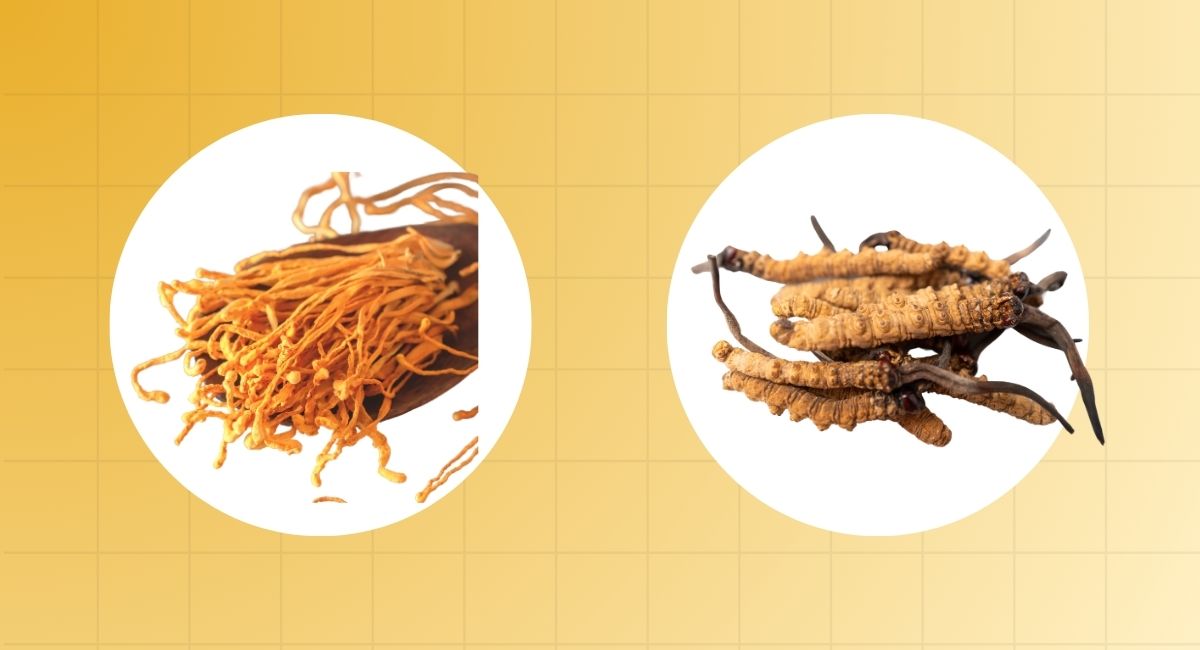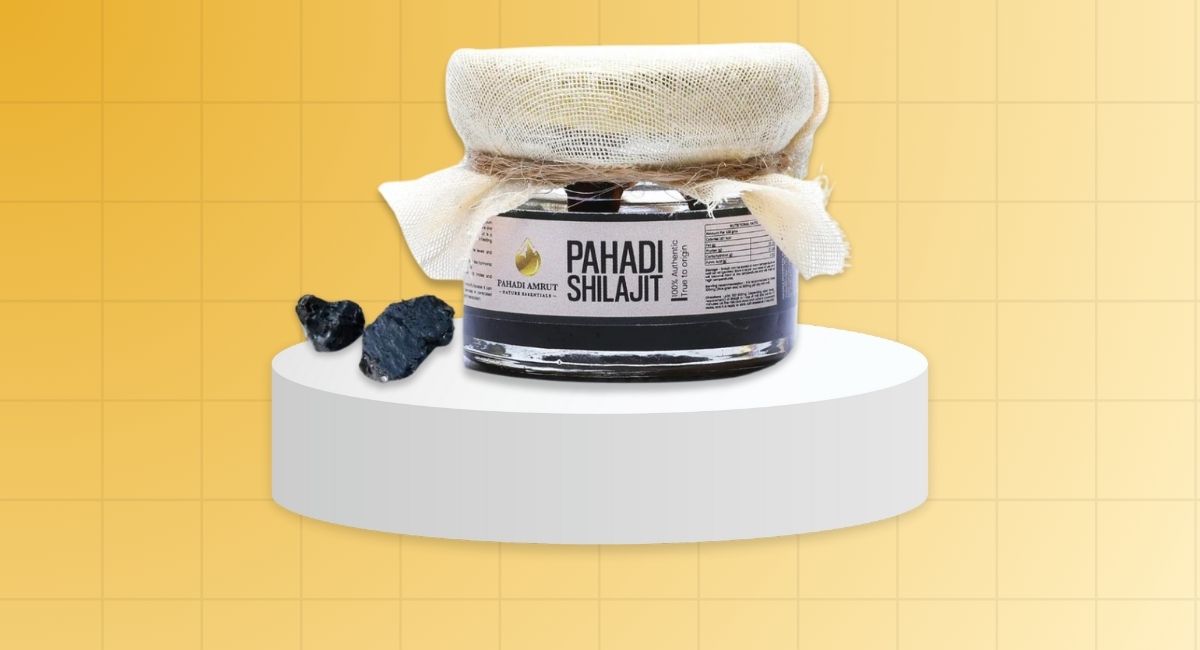Shilajit is an ancient, natural substance that has fascinated people for centuries.
Known as the “Destroyer of Weakness” in Ayurveda, it is a resin that comes from the cracks of Himalayan rocks and is treasured for its many health benefits.
To learn more about Shilajit, how it is made, and why it is so valuable, we spoke to Aditya Sumbria, the founder of Pahadi Amrut.
Aditya’s journey from a corporate career to starting Pahadi Amrut is inspiring. After working for 15 years in sales and marketing in the heavy equipment industry, Aditya followed his passion for nature and healthy living.
He founded Pahadi Amrut to share the purest and finest products inspired by the mountains.
With a background in Mechanical Engineering and a management degree from IIM Lucknow, Aditya has built Pahadi Amrut into a trusted name for authentic Himalayan Shilajit.
Here is what Aditya had to say about Shilajit and the work that goes into making it available for everyone.
General Shilajit Information Questions
What is Shilajit, and how is it traditionally used?
Shilajit is the fifth mineral drug in ‘maharasa group’. Shilajit consists of two terminologies; one is ‘Sila’, which means the rock or the mountain, and the other one ‘jatu’, which is a ‘laksa’ (kind of resin) that trickles down from the Himalayan mountains during summer.
The term ‘Silajit’ is also interpreted as the one which conquers the mountains. It is also called ‘Black bitumen’ and ‘Asphaltum punjabinum’.
Chemical components: The main and active component of Shilajit (Asplahtum punjabinum) is fulvic acid, which is considered as the strongest natural electrolyte.
Fulvic acid is an unusual collection of hormones, nutrients, antioxidants, enzymes, amino acids, superoxide dismutases, free-radical scavengers, bactericidal substances, antiviral, antifungal, biochemicals, and phytochemicals.
During the hot summer season, the temperature in the Himalayan mountains rises. As a result of which, the thick essence from the surface of these rocks oozes out and dries up in between the rocks or sometimes drips down and forms a cake-like shape.
It looks like black coal, this coal-like rock-essence is called ‘Shilajit’
Shilajit is nature’s miracle. It is a resin that seeps out from the cracks of Himalayan rocks. Known as the “Destroyer of Weakness” in Ayurveda, it has been used for centuries to boost energy, stamina, and overall vitality.
Traditionally, it’s consumed with warm milk or water to unlock its full potential.
What are the different types or grades of Shilajit?
Shilajit is categorized into three grades based on its mineral content and origin:
- Swarnadrija; Shilajit which originates from the mountains rich in ‘gold mineral’, and is reddish-like in color is identified as ‘Swarnadrija’.
- Rajatadrija; Shilajit which originates from the mountains rich in ‘silver mineral’, and is pale white like in color is identified as ‘Rajatadrija’.
- Tamradrija; Shilajit which originates from the mountains rich in ‘copper mineral’, and is bluish-like in color is identified as ‘Tamradrija’.
Shilajit is graded by its source and purity. The finest is Swarnndrija, which contains natural traces of gold, followed by Rajatadrija and Tamradrija.
Where is Shilajit found, and which regions produce the best quality?
Shilajit is found in high-altitude regions of the Himalayan mountain range ranging from 12000 to 18000 Ft above sea level. Shilajit found in untouched terrains of the Greater Himalayan range is mostly Swarnadrija and is considered the gold standard.
How does the environment (altitude, climate) affect Shilajit’s quality?
By default, Shilajit is only found in the high altitudes of the Himalayas, so the quality of Shilajit mainly depends on the mineral composition of the mountain and not on altitude and climate.
Is Shilajit naturally occurring year-round, or is it seasonal?
Shilajit is naturally occurring, but it takes decades for it to reaccumulate in the same spot. Shilajit extraction is seasonal because high-altitude regions are snow-bound for half the year, limiting access to these rare deposits.
Extraction and Processing Questions
How do you identify rocks or areas that contain Shilajit?
Identifying Shilajit rocks in the Himalayas is a mix of art and experience. Experienced extractors keep traveling to the unexplored heights of the Himalayas, looking for shiny black resin oozing from rock crevices, especially on cliffs at higher altitudes.
What tools or techniques do you use for extraction?
The most difficult part of Shilajit extraction is to locate and reach the exact spot where shilajit rock is formed, extracting it from there requires simple tools like a chisel, hammer, and a carry bag to store the shilajit rocks.
How long does it take to extract Shilajit from one site?
Gathering a single batch of high-quality Shilajit takes painstaking work—sometimes days or even weeks. Each harvest is unique and labor-intensive.
What are the dangers or risks involved in extracting Shilajit?
The biggest risk is trekking on dangerous terrains and reaching the spot where shilajit rock is accumulated. Extractors face rockslides, hypothermia, and exhaustion, making it one of the most challenging tasks.
How do you purify Shilajit after extraction?
Shilajit is purified using traditional Ayurvedic methods known as Shilajit Shodhana, wherein we dissolve crushed shilajit rocks in hot water mixed with either Triphala Kwatha (Water decoction of Amla Churna, Harade Churna & Baheda Churna) or Gomutra (Cow Urine), and filter it repeatedly to get rid of any impurities, and then either cooked on fire or sun-dry it to reduce the moisture and get a thick paste consistency of Shilajit, which is the final and ready to consume Shilajit resin.
What processes ensure Shilajit is safe for consumption?
We conduct thorough lab tests for heavy metals and toxins. Every batch is tested for purity to ensure it meets international safety standards.
How do you test the quality of Shilajit during or after processing?
We use both traditional methods, like checking its color and texture, and modern lab testing for mineral content and purity.
Economic and Market Factors
How much Shilajit can you extract in a month or a season?
Shilajit is incredibly rare. In a good season, we can harvest just a few kilograms, and that’s from weeks of hard work.
How do you determine the price of Shilajit?
The price reflects its rarity, altitude, and the painstaking effort to extract and purify it. Authentic Shilajit is like liquid gold—it’s worth every penny.
What makes genuine Shilajit so expensive?
From the perilous extraction process to rigorous purification and lab testing, the cost adds up. Plus, only 10-20% of extracted Shilajit is usable after purification.
Why is there a prevalence of fake Shilajit in the market?
Fake Shilajit is easier and cheaper, often using chemical additives or low-quality resins. Many brands prioritize profit over authenticity.
Also Read: Ways To Check The Purity of Shilajit
What are some signs of counterfeit Shilajit that buyers should look out for?
Genuine Shilajit melts in your hand, dissolves fully in water, and has a slightly sweet and earthy taste. If it smells too strong or doesn’t dissolve, it’s likely fake.
How do you build trust with customers to prove the authenticity of your product?
Transparency is key. We share our lab reports, purification process, and even the ancient texts we follow. Direct sourcing and zero middlemen set us apart.
Are there any certifications or quality checks in place for authentic Shilajit?
Yes, our Shilajit undergoes FSSAI certifications and independent lab testing for purity, mineral content, and safety.
Cultural and Health Significance
How do locals in this region traditionally use Shilajit?
Locals have used Shilajit for centuries as a natural energy booster, especially to combat high-altitude fatigue, improve stamina, and as a medicine for faster recovery from accidents.
What are the health benefits people claim to get from Shilajit?
Shilajit is a powerhouse of benefits—from improving energy, immunity, and memory power to reducing inflammation and balancing hormones. It’s a complete health tonic.
You can read our guides:
- Shilajit Benefits For Older Adults
- Shilajit For Hair Growth
- Shilajit For Weight Loss
- Benefits of Shilajit For Women
What myths or stories surround Shilajit in local folklore?
Folklore calls Shilajit the “Gift of the Mountains.” Locals believe it was discovered by observing Himalayan monkeys scaling cliffs to lick the resin for strength.
Does modern medicine recognize the value of Shilajit?
Absolutely. Studies now back its benefits for energy, anti-aging, and overall wellness. However, modern medicine is just catching up with what Ayurveda knew centuries ago.
Sustainability
Is Pahadi Shilajit extraction sustainable in the long term?
Sustainability is a priority for us. We practice ethical harvesting, ensuring we don’t over-extract and always respect the ecosystem. Also, we work closely with local communities to promote sustainable practices.
Takeaway
Shilajit is more than just a resin. It is a testament to nature’s incredible power and the human determination to harness it responsibly.
Aditya Sumbria’s journey and commitment to authentic practices make Pahadi Amrut a beacon of trust in a market flooded with imitations.
His insights provide a rare glimpse into the intricate world of Shilajit, from its origins in the Himalayan mountains to the painstaking effort required to bring this “Gift of the Mountains” to consumers worldwide.
Through Pahadi Amrut, Aditya ensures that the legacy of Pahadi Shilajit continues, delivering not just a product, but a promise of purity, sustainability, and wellness.





